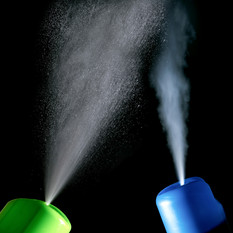Alternatives to Synthetic Fragrances
- Herbert Mack

- May 1, 2019
- 2 min read
75% of households use synthetic indoor air fresheners. Many of the fragrances used in air fresheners contain mixtures of perfumes and essential oils. Although air fresheners are formulated into consumer products at safe levels, for those with chemical sensitivities, the combination of certain chemicals in air fresheners are known to induce asthma symptoms and other respiratory health issues. Don't be fooled into thinking all air fresheners are "toxic". Some air fresheners use essential oils which are derived from plants. Its important to use such items in moderation. Air fresheners are not intended to clean the air or reduce allergens. Air fresheners are consumer products that emit a fragrance to provide an aroma to a space. Many products that we use in our homes contain chemicals that claim to deodorize but do anything but freshen the air. The complex mixture of chemicals ingredients of air fresheners work in a multitude of ways. Believe it or not, air fresheners interfere with our ability to smell either by releasing a nerve deadening agent, coating the nasal passage with an oil film or simply masking the smell. In terms of indoor air quality, air freshener are often labeled as the primary source of volatile organic compounds within the home. About 20 percent of the population and 34 percent of people with asthma report health problems from air fresheners. We know air freshener fragrances can trigger allergy symptoms, aggravate existing allergies and worsen asthma. For those who have pets or other sources of household odors, while it can seem like using air fresheners is a necessity, that doesn’t mean that you have to purchase those toxic air fresheners you often find at the store. There are a number of powerful alternatives. Activated carbon, particularly bamboo charcoal, has a multitude of natural odor removal properties. First there is adsorption. Adsorption works when ions or molecules, from an odor source stick and adhere to the surface of the charcoal. Second, we have absorption; similar to that of a sponge soaking up water. Atoms pass through or enter the porous structure bamboo. Charcoal also pull moisture from the air making it a natural dehumidifier. As a dehumidifier, charcoal prevents mold, mildew and bacteria from forming thus reducing odors.











Comments